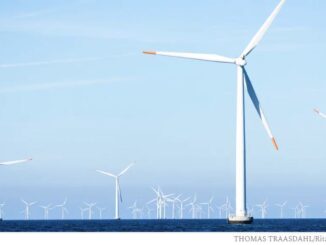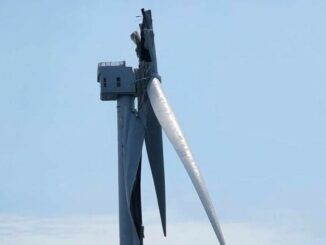
This incident not only highlighted manufacturing challenges in the burgeoning industry but also raised broader questions about environmental impacts and the long-term sustainability of offshore wind amid shifting federal funding landscapes.
The History of Vineyard Wind’s DevelopmentVineyard Wind 1 marks a milestone as the first commercial-scale offshore wind farm in the United States, symbolizing the nation’s push toward renewable energy diversification.
The project’s origins trace back to 2010, when the Bureau of Ocean Energy Management (BOEM) identified potential lease areas off the Massachusetts coast. In 2015, Vineyard Wind LLC—a joint venture between Avangrid Renewables (a subsidiary of Iberdrola) and Copenhagen Infrastructure Partners—secured the lease for approximately 166,886 acres, located about 15 miles south of Martha’s Vineyard.
Development accelerated under the Biden administration’s renewable energy agenda. In May 2021, the Departments of the Interior and Commerce approved the project’s construction and operation plan, greenlighting an 800-megawatt (MW) farm with 62 fixed-bottom turbines.
This approval aligned with the administration’s goal of 30 gigawatts (GW) of offshore wind by 2030. Financial close was achieved in August 2021, and onshore construction began in November 2021, followed by offshore work in late 2022.
The project faced hurdles, including legal challenges from local fishing groups and tribes over environmental concerns, as well as supply chain disruptions. Despite these, Vineyard Wind installed its first turbine in June 2023 and began delivering power to the New England grid in early 2024, reaching over 136 MW from initial turbines by February 2024.
However, the timeline slipped from original targets, with full operations delayed beyond the initial 2023 goal due to permitting, construction setbacks, and the 2024 blade incident.
Vineyard Wind has been positioned as a model for future projects, spurring additional developments like Park City Wind (804 MW) in 2019.
Yet, its history underscores the complexities of offshore wind: high upfront costs, regulatory scrutiny, and vulnerability to technical failures.The Blade Failure and Its Environmental TollThe settlement stems from a turbine blade failure on July 13, 2024, when a 107-meter GE Vernova Haliade-X blade on the southernmost turbine snapped due to a manufacturing deviation at a Quebec factory.
The incident led to the detachment of large sections, scattering non-toxic fiberglass fragments—ranging from small shards to sizable pieces—across Nantucket’s shores and into the ocean.
The pollution impacts were immediate and multifaceted:
- Beaches and Tourism: Debris washed ashore during the height of summer, forcing beach closures and swimming restrictions on Nantucket.
This disrupted the island’s vital tourism economy, with local businesses reporting losses from canceled events and reduced visitors. Cleanup efforts involved community volunteers and professional teams, recovering three large fragments while monitoring for more.
- Marine Life and Ecosystems: Approximately 50 tons of microplastics, balsa wood, foam, and fiberglass entered the ocean, settling on the seafloor and entering the water column.
While environmental analyses deemed the materials non-toxic, concerns persist about long-term effects.
Marine experts worry that fragments could be ingested by fish, seabirds, and marine mammals, potentially entering the food chain.
The area is a critical habitat for endangered species like North Atlantic right whales, and ongoing studies under the Endangered Species Act highlight risks from debris and operational noise.
One large piece sank to the ocean bottom, complicating recovery and raising fears of habitat disruption.
- Broader Issues: The failure prompted a federal shutdown by the Bureau of Safety and Environmental Enforcement (BSEE), halting installations until January 2025.
GE Vernova removed all blades from the affected factory line, delaying the project’s completion.
Critics, including groups like ACK for Whales, argue the incident exposes inadequate safety protocols and enforcement, exacerbating visual and acoustic pollution in sensitive marine areas
Despite these challenges, proponents emphasize that such failures are rare in wind turbines, and the environmental footprint pales compared to fossil fuel spills.
Settlement Details and Community Response
Under the agreement, GE Vernova’s $10.5 million payment will fund a Community Claims Fund, administered by an independent third party to evaluate and compensate affected businesses.
Nantucket officials described the debris as infiltrating the ocean floor, water table, and beaches, necessitating months of cleanup.
GE Vernova has committed to ongoing monitoring, but the settlement does not address potential long-term ecological damages, focusing instead on economic harms.
Funding Cuts and Long-Term Viability
The settlement arrives amid uncertainty from the recently passed “One Big Beautiful Bill Act” (H.R.1), a fiscal year 2025 budget reconciliation measure signed into law in early July 2025.
This legislation, often referred to as the “Big Beautiful Bill,” includes significant rollbacks to clean energy incentives established under the 2022 Inflation Reduction Act (IRA).
Key reductions target renewable energy tax credits, shrinking opportunities for wind and solar projects by clawing back hundreds of billions in funding.
The IRA had been a boon for offshore wind, providing a 30% investment tax credit (with bonuses for domestic content) that helped Vineyard Wind achieve financial viability and spurred industry growth.
These cuts could imperil projects like Vineyard Wind, which relies on such incentives to offset high costs exacerbated by inflation, supply chain issues, and incidents like the blade failure.
Analysts warn that reduced subsidies may delay expansions, increase electricity rates for consumers, or even lead to project cancellations, as seen with at least two other offshore wind ventures now at risk.
For Vineyard Wind, already behind schedule and facing repair costs, these funding reductions threaten long-term economic sustainability. While the project is partially operational, diminished federal support could hinder maintenance, blade replacements, and future phases, potentially slowing the U.S. transition to renewables.
As the industry navigates these headwinds, the Nantucket settlement serves as a reminder of the delicate balance between innovation, environmental stewardship, and policy stability.








